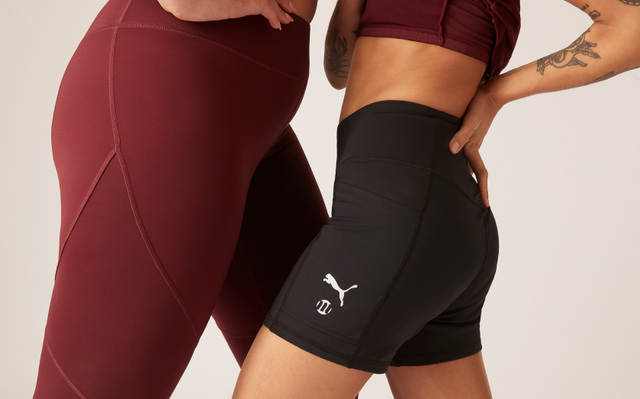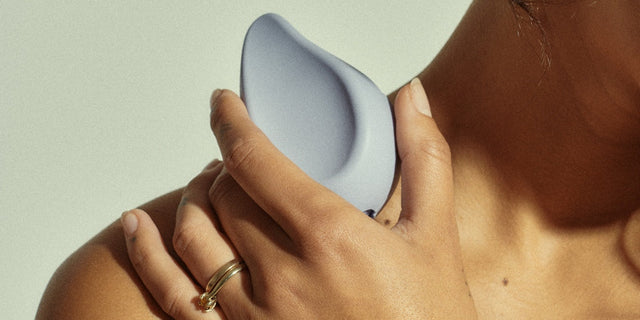Luteal phase workouts: working (out) with your menstrual cycle.
Our menstrual cycle has a lot to answer for. With each phase bringing a slew of changes in our moods, appetites and energy levels, it can be hard to keep up. Learning what’s happening in your body throughout your cycle – and working with it, not against it – can help you to make better choices for a happier, healthier you.
If you’re feeling extra tired, hungry or moody in the lead-up to your period, you’re not alone. It’s easy to feel like the world is ending, but trust us; it’s just the luteal phase of your cycle doing its thing.
In this article, we take a look at why your energy output looks different throughout your cycle. We’ve got some tips on adapting your luteal phase workouts, and we explore the importance of going easy on yourself if you are experiencing any symptoms that leave you feeling a little flat.
What’s the luteal phase?
Put simply, the luteal phase is the second half of your menstrual cycle. It starts after ovulation and ends on the first day of your period. The main purpose of the luteal phase is to prepare your body for a possible pregnancy. Let’s take a closer look.
What’s happening inside your body during the luteal phase
After an egg is released during ovulation, the luteal phase starts. The part of the ovary that released the egg transforms into the corpus luteum, which produces progesterone and some estrogen. Progesterone makes the lining of the uterus thicker, which helps a fertilised egg attach and grow if you become pregnant. If you don't get pregnant, the corpus luteum gets absorbed into the body, and the lining of your uterus sheds – this is your period.
Tamra Santucci is a women's life and health coach specialising in feminine energy, period health and fitness. She explains, “During the luteal phase, estrogen will drop, and to offset the drop of estrogen, progesterone will rise. This change in hormones is what has the biggest impact on your energy levels and mood.”
What to expect during the luteal phase
Due to changing hormones – and a whole lot happening in your uterus – it’s no surprise that the luteal phase comes with its own set of potential symptoms and side effects.
Luteal phase discharge
As you move into your luteal phase, you may notice your discharge becomes thicker, drier and more paste-like in consistency.
It's totally normal to experience changes in your discharge throughout your menstrual cycle, but it's crucial to pay attention to any abnormal changes or symptoms. So if you notice any increase in volume, a funky smell, a change in colour or texture, or anything else out of the ordinary, reach out to your healthcare provider.
PMS symptoms in the luteal phase
Not everyone will experience these symptoms, but here are some signs that might indicate you’re in your luteal phase:
- Bloating
- Cramps
- Mood swings
- Breast tenderness
- Tiredness
- Headaches
- Changes in appetite
- Brain fog
Luteal phase workouts
Have you ever tried to do a HIIT class just before your period and struggled big time? Ever lost motivation entirely in the week or so before your period? Don’t beat yourself up about it. You can learn how to work with your cycle and keep your body moving with just a few small changes.
Tamra recommends asking yourself: “Do you want to rest today? Do you want to go for a light workout today? Do you want to drink more water? Do you want to go out with friends? Do you want to prioritise rest? Just slowing yourself down, being more compassionate and communicating with yourself can really help.”
Your hormones impact workouts
It’s worth remembering that most exercise regimes don't consider menstruation, and when we look at what’s happening hormonally, the science just doesn’t add up. People who menstruate experience monthly hormone fluctuations, whereas those who don’t only have a one-day hormone cycle. As a result, people try to implement exercise programs that aren’t constructed with their biology in mind, leaving them wondering where they went wrong when their energy changes. Understanding your cycle and working with your energy levels can help you to create an exercise routine that works for you.
Work (out) with your cycle
During your luteal phase, we recommend sticking to low-intensity exercise. Tamra shares, “Your metabolism increases during your luteal phase, so heavy or intense workouts will place major stress on your body – which can lead to hormone imbalances. Leave those heavy, intense workouts for the first half of your cycle, and do more slower movements.”
Workouts to try during this phase include:
- Yoga
- Pilates
- Walking
- Strength training with light weights
Foods to support the luteal phase
Another way to work with your cycle during the luteal phase is through the foods you’re eating. During this chocolate-craving phase, you want to focus on nutrient-dense foods that will help keep your blood sugar levels stable. Aim for food high in magnesium, like chicken, legumes and dark chocolate, and foods high in vitamin B6, like fish and starchy carbs (think pumpkin and sweet potato). Adding these foods to your diet during the luteal phase can help support your body's needs and keep you feeling your best.
Embracing every phase of your cycle
Now you’ve got a better idea of what’s happening during your luteal phase, you can start making small changes to help support your body (and your mind) through this time. Remember that every body is different, and what’s right for someone else may not be right for you. By understanding and working with your own cycle, you can start to feel more aligned and connected with yourself.
Keen to learn more? Head to the blog for more info on tapping into your ovarian cycle.







